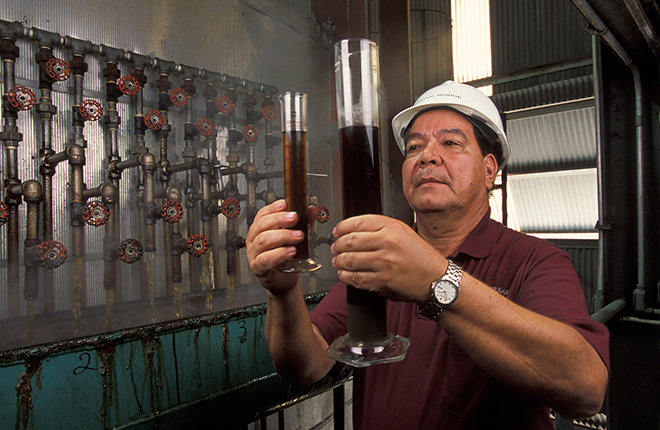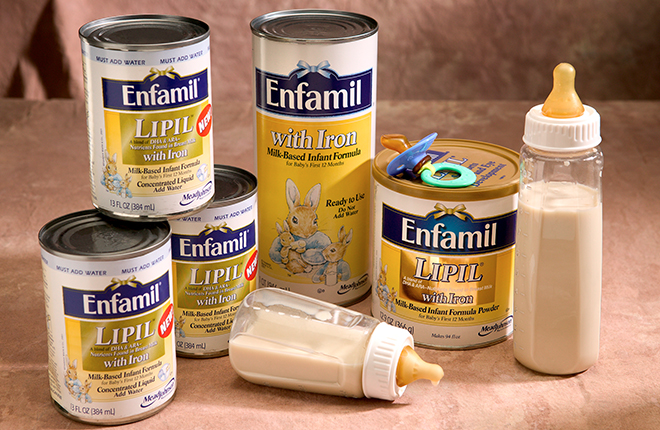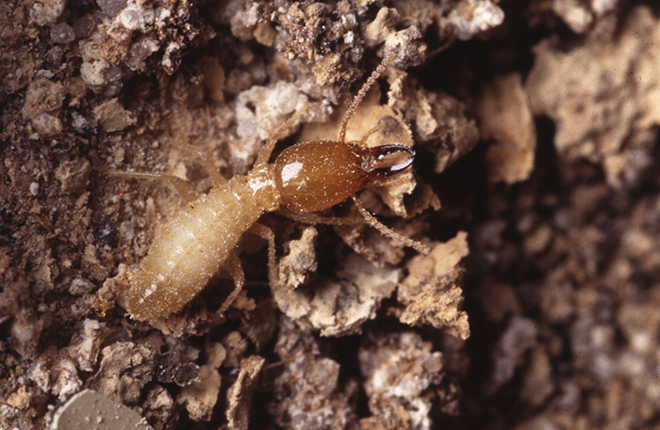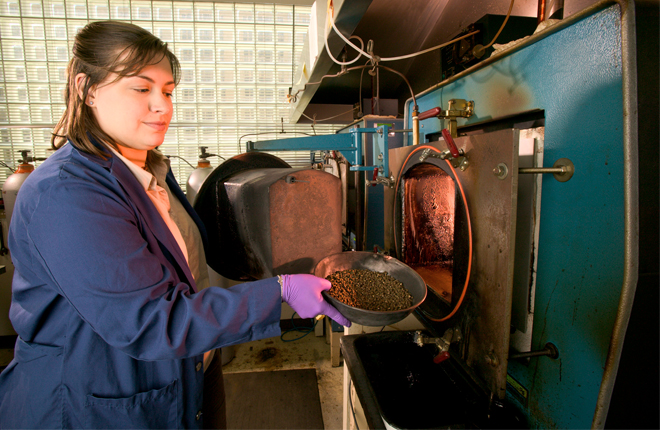Southern Regional Research Center
A diverse array of research is conducted at the Southern Regional Research Center (SRRC) in New Orleans, Louisiana, with a focus on cotton-fiber and food-science/food-sensory technologies; food safety; and new ways to process and use agricultural products. Scientists there investigate catfish, corn, cotton, nut allergens, oil crops, rice, sugar beets, and sugarcane.
Flame-retardant cotton fabrics, frozen orange juice concentrate, and partially defatted peanuts are just a few innovations developed through research at the center during its first 60 years (see table). For the last 15 years, SRRC has continued its success in finding new ways to fully utilize agricultural products, promote human health and nutrition, improve product safety and quality, and develop crop production and processing technologies while minimizing environmental impact.
Research at the center has yielded numerous products and technologies that benefit consumers and industry. The following are some of SRRC’s latest innovations.
Sunbutter: An Alternative to Peanut Butter
In the early 2000s, collaborative research between SRRC and Red River Commodities—a sunflower seed producer in Fargo, North Dakota—led to the development of a sunflower-seed spread that offers a tasty option for children and adults who are allergic to peanuts. The new product, Sunbutter, now produced in the largest U.S. sunflower seed roasting facility, is available in many grocery food chains, health food stores, and discount wholesalers and is used as an ingredient in food products. Some of the largest national and international food companies and school systems use Sunbutter, which has been classified as an official commodity of the U.S. Department of Agriculture’s National School Lunch Program. This technology alone expanded the U.S. sunflower market through increased production and value, increasing sunflower farmers’ profits and creating new jobs.
Sweetening Sugarcane Processing Methods
Working with the sugarcane industry in Louisiana, SRRC scientists demonstrated the best methods to clarify sugarcane juice, which has had a huge economic impact on factories in Louisiana as well as in Florida, Texas, Brazil, and elsewhere. After sugarcane is harvested, the juice must be extracted, then clarified to remove impurities. This process uses chemicals, such as lime, and heat. Scientists discovered that switching from cold to hot or intermediate-temperature lime clarification reduced sugar losses and limited lime consumption. The process was adopted by more than 90 percent of U.S. factories, saving them nearly $4 million per year. Other significant sugarcane research includes optimizing seasonal sucrose losses, saving factories more than $1.6 million a year; dextranase and amylase applications; and introducing a new method to measure sugarcane deterioration.
Rice Batter Soaks Up Less Oil
A new rice-based batter absorbs less oil when fried, yet it maintains a crispy texture. It is now available, thanks to ARS-patented technology developed by SRRC scientists. A Maryland company, CrispTek LLC, is marketing the dry rice-based product as ChoiceBatter. Those who love a good batter on fried or baked foods now have a choice of a less oily coating. Oil uptake for fried wheat flour batters is high, whereas rice flours have the unique property of decreasing the oil uptake by 50 percent and offer the advantage of being gluten free. ChoiceBatter is sold in stores, including major grocery chains, across the United States.
Omega-3 Fatty Acid Helps Infant Development
SRRC scientists discovered that using docosahexaenoic acid (DHA), an omega-3 fatty acid naturally found in breast milk, in infant formula can help with infant development. Researchers worked with Martek Biosciences Corporation in Columbia, Maryland, to help develop this ARS-patented oil-refining technology into a product. In 2003, it represented a $400 million market for the company. In 2009, sales of the infant formula that incorporated DHA totaled about $2 billion.
An International Cotton Connection
SRRC played a critical role in ensuring the adoption by China of a cotton quality measurement system developed by USDA. The Chinese system now requires use of the U.S. cotton measurement system, which makes U.S. cotton more favorable relative to imported cotton produced by other countries. According to U.S. cotton growers, the system that was going to be used before the alternative U.S. system would have eliminated their ability to export cotton to China.
Fighting Formosan Subterranean Termites
The Formosan subterranean termite is one of the most destructive pests in the United States, with estimated yearly losses reaching $3 million in the New Orleans area and more than $2 billion across the United States. Researchers began a pilot project in 1998 to treat French Quarter properties using areawide management to reduce densities of termites. Bythe time the project ended in 2012, results from use of in-ground monitoring stations showed that termites had declined by 95 percent.
Nonwoven Fabrics for Disposable Diapers
SRRC technologies to adapt cotton nonwoven fabric (unbleached and undyed) for disposable diapers were used by TJ Beall Company, the Seventh Generation Company, and Target stores in launching their new disposable diaper products. The Seventh Generation product—Touch of Cloth disposable diaper—was launched in 2014.
Beating Aflatoxin at Its Own Game
Aflatoxin is produced by toxic strains of the fungus Aspergillus flavus. In the United States, chronic crop losses due to aflatoxin contamination are estimated to cost more than $100 million annually. SRRC scientists developed a biological control technology that uses natural, non-toxin-producing strains of A. flavus for field control of the fungal poison on several crops. In 2015, more than 1 million acres of U.S.-grown cotton, corn, peanuts, pistachios, and figs had been treated with U.S. Environmental Protection Agency-registered and patented biopesticides containing the helpful strains of A. flavus as active ingredients. In collaboration with the International Institute of Tropical Agriculture, SRRC scientists have developed biopesticides for nine African nations. These natural biopesticides help reduce human exposure to aflatoxins and increase the profitability of U.S. agriculture.
Other SRRC research includes developing procedures to remove up to 98 percent of allergens from peanuts without affecting the flavor; sweetpotato flour, a good source of antioxidants, which can be used as a substitute to make products such as pancakes for people who are allergic to wheat; and antimicrobial treatments for cotton to help reduce odor-causing bacteria in socks, T-shirts, and other garments. Scientists continue their research in these areas and more—developing new products, production processes, and technologies that promote health and nutrition and improve product safety and quality.—By Sandra Avant, Agricultural Research Service Information Staff.
“Southern Regional Research Center, New Orleans, Louisiana” was published in the October 2015 issue of AgResearch Magazine.
Key Facts
- Southern Regional Research Center.
- Located in New Orleans, Louisiana.
- Research focuses on cotton and sugarcane and their byproducts.
- Also has research projects on bioenergy, food processing, and food safety.
Full Story














